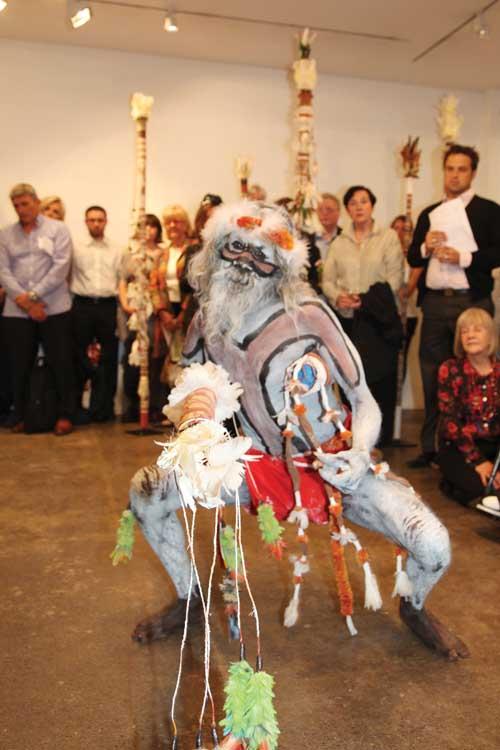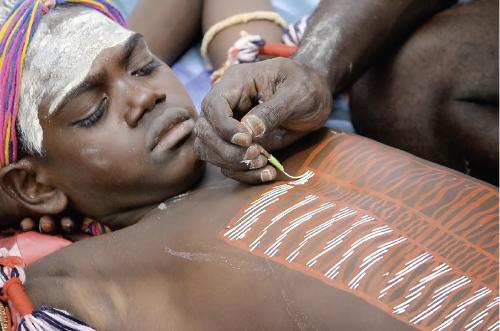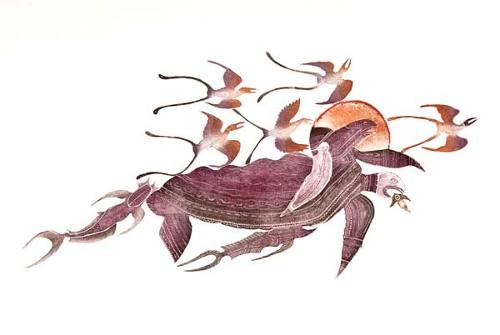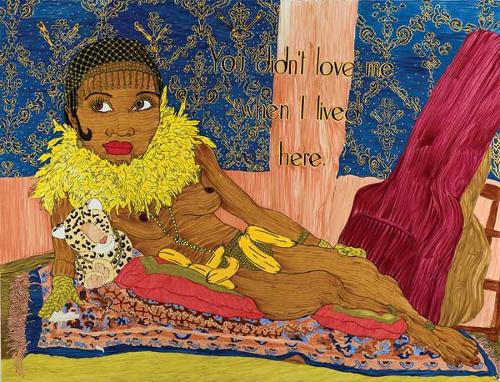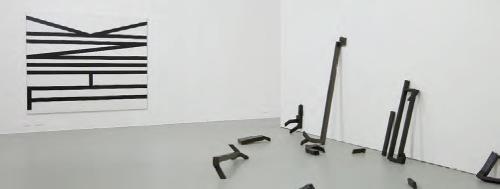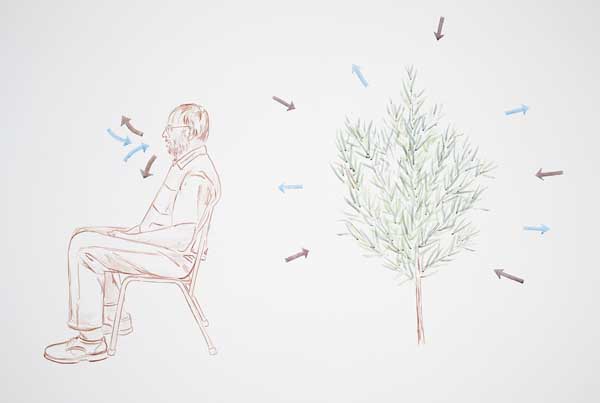
NETWORKS (cells & silos) explores the theme of interconnectivity, establishing a constellation of artworks from a range of local and international artists to engage with selections from MUMA's own collection, drawing inspiration from a range of network models and modes of configuration. Prefaced by the implications of the title, the viewing of the exhibition continues in the search for pattern, the associations and dialogues generated between the works, as much as within the individual pieces themselves, many of which are compelling in their own right. For within this gathering there are other gatherings to be discerned, which overlap and intersect and overlap again, not necessarily in accordance with any pre-determined pattern.
A talismatic congregation is witnessed in Mikala Dwyer’s Outfield (2009) with motifs, similarly totemic, to be observed in Gali Yalkarriwuy Gumuwiwi’s Banumbirr - Morning Star Poles (2007-2008) which shares a certain correspondence with Dorothy Braund’s Christ with the Disciples Listening (1966) and Tjaduwa Woods’ Ilkurlka (2010). Nick Mangan’s Colony (2005), reminiscent of Max Ernst’s collographic landscapes, is somewhat ruinous and outcast, and this sense of disconnect prevails despite the contemporary modes of communication shown in Andrew McQualter’s Three Propositions, One Example (2010-2011). Jan Nelson’s series of children’s portraits Walking in Tall Grass (2010) is engaging too in its gathering of colour, the intensity of its lurid candy shades linking it to Sandra Sellig’s three dimensional yet ephemeral pink diagram Heart of the Air You Can Hear (2011).
The diagram is an obvious motif, but not one without potential or innumerable representational means. Heath Bunting’s The Status Project: A1072 Able to Provide Natural Person Date of Birth (2010), is a literal manifestation, while Kerri Poliness’ Blue Wall Drawing #1 (2007/2011) is more abstract in form, and is of a related genus to Koji Ryui’s clusterings. His Extended Network Toward the Happy End of the Universe (2007-2011) resonates with Brian Spier’s Shadowmath (2010) the density of which is intensified in Masato Takasaka’s Information Superhighway (2006-2007). Such links literally take form in Aaron Koblin’s Flight Patterns (2010) which collect the connection between destinations composited in Kit Wise’s fantasy-like cities including KTM SEA MOW RUH (2010) named after airport codes.
Similarly coded is the delicate lace-like latticing of Justin Trendill’s Darlinghurst 1 (2010) interspersed with text and other localities, a denser textile quality registering in John Dunkley-Smith’s, Perspectives for Conscious Alterations of Everyday Life, #5 (1990) and Roger Kemp’s Metamorphosis (1973). Trendill’s text also correlates with Mutlu Çerkez’s social networking transcripts Various Responses; Ah hi I’m (21 November 2021) (2004). Drawn from the web also is Natalie Bookchin’s Mass Ornament (2009), which inadvertently provides the soundtrack to the exhibition, modern-day Tiller Girls, charming, clever and hilarious.
A myriad of other associations and groupings abound, such is the richness and delight of the work in situ, alas, the space available here does not allow for detail or other discursions. And if you did want more, a dialogue between the artists regarding the nature of networks and group shows would have been welcome alongside the thought-provoking catalogue essays.
Another admonition is the design of the gallery, though unlisted, it seeks to situate itself as a work of art via its passageway. Galleries are by right thresholds, but MUMA is too small to permanently accommodate such a self-aggrandising gesture, bifurcating the spaces, hindering shows that occupy the gallery as a whole, interrupting reveries in their experiencing.
NETWORKS (cells and silos) is, regardless, a well-conceived and thoroughly engaging show. As Alfred North Whitehead once noted: "every entity is only to be understood in terms of the way in which it is interwoven with the rest of the universe", and networks, like cloth (one of the most perishable and fragile of artefacts) must constantly be tended or reworked, as activity is integral to their very existence. And it is in art’s foregrounding of a variety of networks and their workings, that the value of NETWORKS (cells and silos) lies.

